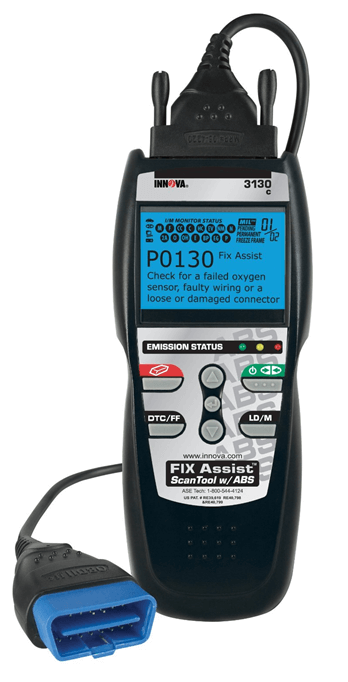Check engine light on? — Is it serious?
A check engine light on means there’s a problem. As long as it isn’t flashing and it’s driving ok it’s probably not an expensive fix
What does a check engine light mean?
Vehicle computers are very sophisticated and can routinely test each system in the vehicle, fuel, spark, exhaust, emissions, etc. The emissions laws state what minimum standards the vehicle must meet, so when the vehicle computer tests emissions and the results come up outside of spec, it will set a check engine light and store a trouble code.
A check engine light isn’t limited to just emissions issues
The anti-lock brake system (ABS) is one of the vehicle systems constantly tested by the vehicle’s computers. If they detect an issue with the ABS system, the computer will turn on the ABS warning light and the traction control system light (if the vehicle is equipped with traction control, as well as the check engine light.
In fact, vehicle computers constantly monitor all vehicle systems and set distinct 5-digit trouble codes according to system:
Codes that start with P are powertrain related codes
Codes that start with B are body systems related codes
Codes that start with C are chassis related codes
Codes that start with U are digital network related codes
Can you drive with a the light on?
That depends. If the check engine light isn’t flashing and the vehicle is starting, accelerating and running smoothly, then yes, you can continue driving it until you can get it into the shop. However, if the light is flashing, that’s a serious problem (see below). And, if it’s not running properly, you should get it into the shop ASAP.
A flashing light is far more serious
A flashing check engine light is very serious. It means your engine is experiencing a misfire that’s severe enough to damage the expensive catalytic converter. If you have a flashing check engine light, you should try backing off on the gas pedal to see if the flashing stops. If it does, you can drive it to the nearest shop by reducing your acceleration and heavy foot. If the flashing does not stop, pull over and call a tow truck. A tow will be much cheaper than replacing the catalytic converter and repairing the underlying cause of the misfire.
How to find out what turned on the light?
The ONLY way to start the diagnostics to find out why the check engine light came on is to plug in a code reading tool and poll the computer.
Once a trouble code sets and lights the light, that code is stored in computer memory. A code reader or scan tool (there’s a difference between the two) polls the computer memory and pulls up the trouble code. Some units decipher the code and tell you what it means in plain English, while others just pop up the code.
Once you have the trouble code you can diagnose the root cause
Once you have the code, do an Internet search for that code on your vehicle. For example, search of P0301 2015 Subaru Outback. If it’s a common code for that vehicle, you’ll see lots of fixes. If you can’t find good information or you’ve tried the fixes posted online, it’s time to get your hands on a shop manual to find the tests to narrow down the cause.
The best online manuals are alldaydiy.com and eautorepair.net. You can purchase a subscrption from the links below or you can contact your local library to see if they offer free access those manuals in the library.
How to read trouble codes
1) Take it to an auto parts store that checks codes for free.  Most major retail auto parts stores (like Autozone, Advance Auto, O’Reilly) will scan your computer for free. But beware, their parts guys are NOT technicians. So if the trouble code translates into “Oxygen sensor lean,” I guarantee you the parts guy will sell you a new oxygen sensor. Do you need one? Well, what if the exhaust stream really IS lean and the oxygen sensor is telling the truth? $80 down the drain. Remember, parts stores are in business to sell parts. Don’t rely on them to diagnose problems.
Most major retail auto parts stores (like Autozone, Advance Auto, O’Reilly) will scan your computer for free. But beware, their parts guys are NOT technicians. So if the trouble code translates into “Oxygen sensor lean,” I guarantee you the parts guy will sell you a new oxygen sensor. Do you need one? Well, what if the exhaust stream really IS lean and the oxygen sensor is telling the truth? $80 down the drain. Remember, parts stores are in business to sell parts. Don’t rely on them to diagnose problems.
2) Buy your own code reader or scan tool
In the early days of OBDII, code readers and scan tools cost a fortune and only professional technicians could afford them. But today you can buy a code reader for $40. All right, I can hear you whining. But before you go into a full pity-party, remember that “in the old days” we had to buy special tools to work on cars. Remember tach/dwell meters for setting “points” in the distributor? Or that timing light you had to use to set timing? How about those distributor wrenches that you only used once every 3 years? So get over it—you’re going to have to spend money on a new tool.
© 2012 Rick Muscoplat
Posted on by Rick Muscoplat